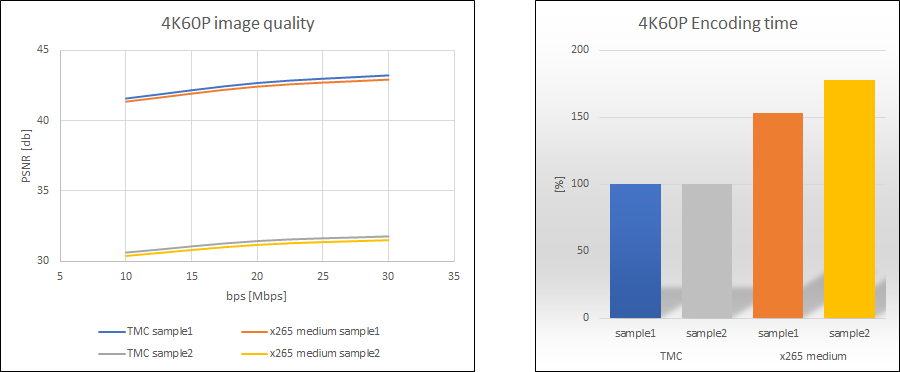H.265/HEVC is the ISO/IEC standard for video compression and decompression. H.265/HEVC which has double compression performance of the H.264/AVC video compression standard, is expected to be used for high-definition video distribution such as 4K (3840 x 2160) and 8K (7680 x 4320), as well as video distribution services for mobile devices on the limited bandwidth.
We have developed and commercialized a software H.265/HEVC encoder.
| Stream Format | Byte stream format (Annex B) |
| Image Format | YCbCr 4:2:0/4:2:2/4:4:4/4:0:0 Planar Format |
| Bit Depth | 8 bits/10 bits/12 bits |
| Resolution | 64 x 64 to 7680 x 4320 |
| Operation Mode | Five levels can be set at trade-off between processing speed and image quality. |
This IP supports both color spaces of YCbCr and YUV.

What is NUMA architecture?
The NUMA (Non-Uniform Memory Access) architecture is one of the architectures used in shared memory multiprocessor computer systems.
It is characterized by the fact that the access speed to memory, which is shared by multiple CPUs, varies depending on the specific combination of memory and CPU.In this architecture, there are multiple pairs of processors and memory (referred to as nodes).
The memory of the same node as a processor is called “local” memory, while the memory of other nodes is called “remote” memory.Typically, there is a relationship where:
“access latency of local memory” < “access latency of remote memory”.
By placing frequently accessed data that processors need to access in low-cost memory and infrequently accessed data in high-cost memory, the number of processors sharing the bus is reduced, preventing bus congestion, and as a result, the bus clock improves.